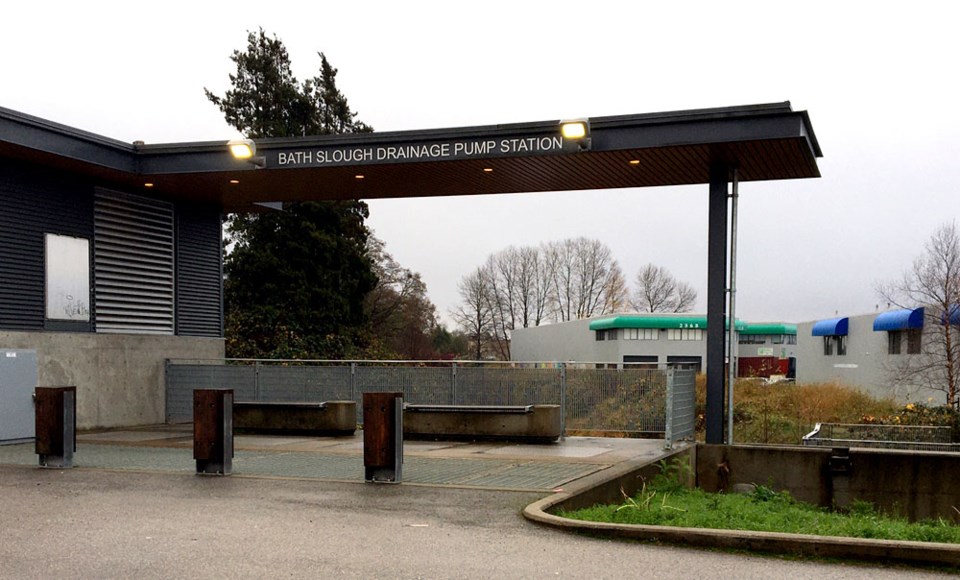B.C. needs a comprehensive flood control plan for the Fraser Valley following last year’s catastrophic floods, according to the Senate committee on agriculture and forestry.
Last November, historic rainfall caused flooding of 15,000 hectares of land, affecting more than 1,000 farms and 2.5 million livestock, washing out highway and railway infrastructure, and causing an estimated $285 million in damage.
This flood control plan is “critical” to protect this region from future, potentially worse, disasters, the senate committee said its study concluded.
"Floods like those in southwest British Columbia in November 2021 will inevitably happen again and the damage they cause could be much worse," Sen. Robert Black, chairman of the committee, said in a news release.
It’s time to update the province’s “outdated flood mitigation infrastructure,” Black added.
Richmond raises $14 million annually for drainage systems
According to a flood management expert, the competitive nature of grant system has created “have and have not” communities – Richmond, as a larger municipality with staff to write extensive grant applications, has benefited.
“Richmond has a very strong engineering department, and, from my understanding, they’re on top of the best (available) science,” said Lilia Yumagulova, who did her PhD at UBC in flood management in Metro Vancouver.
Other municipalities aren’t necessarily so lucky.
Currently, municipalities compete for funding from senior governments on a “merit-based” system, but this means well-resourced municipalities have more expertise and staff to write grant applications as well as money to co-finance projects.
But a smaller municipality — like Princeton or Merritt — is not going to have the same resources and staffing as a city like Richmond to apply for that kind of funding.
Yumagulova said funding should be “risk-based.” That would assess which municipalities are more vulnerable — rather than being based on who can write better grant applications.
“This problem of competitive funding where municipalities have to do all the homework, apply for funding and co-finance the flood protection has been a major issue in the province,” Yumagulova said.
During the three-day atmospheric river event of November 2021, pumps in Richmond were working at almost 80 per cent capacity to keep the city dry. The pumping system can expel a million gallons of water per minute at full strength.
Richmond has been planning and implementing flood protections measures for 20 years, ever since the province downloaded this responsibility onto municipalities. There are 39 pump stations and 49 kilometres of dykes that need to be maintained in Richmond.
Richmond taxpayers have been paying into a drainage and dyking utility since the year 2000, and it raises $14 million per year.
On top of that, several successful grant applications have guaranteed funding to rebuild pump stations and raise dykes.
Yet another grant application was submitted by the City of Richmond just a few weeks ago for almost $10 million toward a $13 million project. The project is to upgrade the No. 3 Road South pump station close to the Bark Park and raise a 200-metre section of the dyke adjacent to the station.
The city has applied for $5.2 million from the federal government and $4.3 million from the provincial government, which would mean, if successful, Richmond would be on the hook for the remaining $3.5 million.
The grant money is administered by Emergency Management BC and the total money available is about $81.8 million.
Sen. Paula Simons, deputy chair of the committee, said the need for major updates to dykes had been known for years but nothing had been done to address the situation. She cited a 2015 study that found 87 per cent of the dikes in the Lower Mainland of B.C. were "in less-than-fair condition" and 71 per cent were "expected to fail simply by overtopping" in the event of a flood.
"To be told that it's 70 to 80 per cent of the dikes (that) are not going to be equipped to do the job required of them is a pretty sobering realization," she said.
The senate committee said the plan should include a timeline for dyke upgrades and calls for the creation of a committee to examine flood mitigation measures, emergency preparedness and response strategies.
It should be developed by the federal and provincial governments in collaboration with other stakeholders, including Indigenous communities, so it reflects the various challenges that different communities face when hit by flooding, the committee said.
The report also calls for co-operation between the Canadian and United States governments to address transboundary water issues, including the Nooksack River, which overflowed in the U.S. and was a major contributor to the flooding in the Fraser Valley.
- with files from Canadian Press



